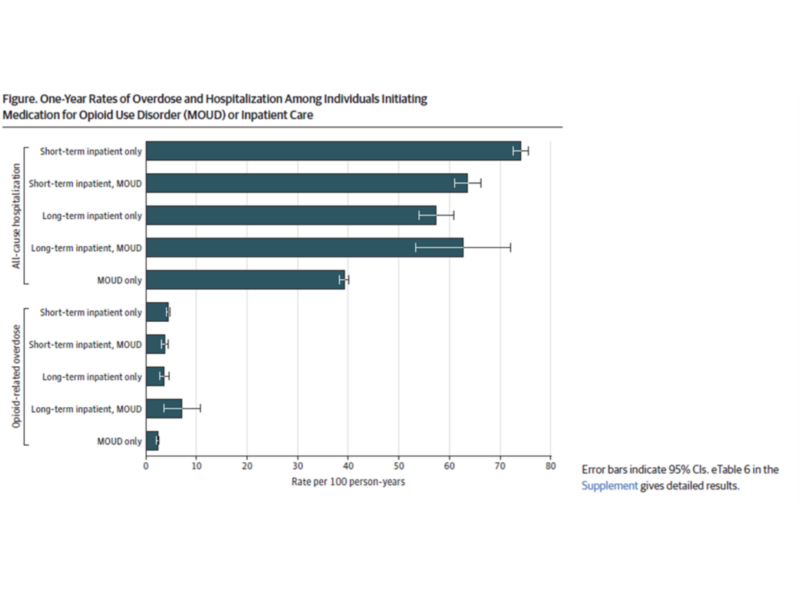Inpatient care versus outpatient MOUD treatment for individuals with OUD

In a new study in JAMA Network Open, CHERISH investigators Jake Morgan, Sean Murphy, Alexander Walley, Benjamin Linas and Bruce Schackman and colleagues, examined whether rates of opioid-related overdose and all-cause hospitalization differed after outpatient medication treatment or inpatient care for opioid use disorder. They studied individuals who had received one of three federally- approved medications for opioid use disorder (MOUDs) – buprenorphine, extended-release naltrexone, and oral naltrexone. Methadone was excluded because it is not routinely captured in commercial health insurance claims that they used as their data source.
Using data from the IBM Watson MarketScan Commercial Claims and Encounters Database collected between 2010 and 2017, 37,090 individuals with OUD were identified who had received one of five types of treatment: (1) outpatient MOUD only, (2) short-term inpatient care only, (3) short-term inpatient care followed by outpatient MOUD within 30 days, (4) long-term inpatient care only, (5) long-term inpatient care followed by outpatient MOUD within 30 days. To address selection bias, the authors utilized propensity score matching between patients who initiated outpatient and inpatient treatment.
Initiation of outpatient MOUD alone had the lowest rate of opioid-related overdose (2.2 overdoses /100 person years (PY) in the following year compared to inpatient settings (3.5 to 7.0 overdoses /100 PY). Individuals who initiated outpatient MOUD had almost half the rates of all-cause hospitalizations (39 hospitalizations/ 100 PY) compared with inpatient settings (57 to 74 hospitalizations/ 100 PY). All inpatient settings were significantly associated with both increased risk of overdose (hazard ratio (HR) 1.71 to 2.67) and all-cause hospitalizations (HR 1.33 to 1.90) compared to outpatient settings.
The authors found that although individuals under 30 were less likely to experience a negative outcome than individuals 30 or older, those under 30 who were dependents (i.e. not primary holder of their insurance plan) had increased risk of negative outcomes.
Expanding outpatient MOUD treatment capacity is an evidence-based response to the opioid crisis, while further research is needed to ascertain which groups of people would benefit more from inpatient care.